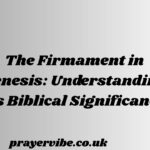Matthew, one of the twelve apostles and the author of the first Gospel in the New Testament, has a fascinating story that reflects transformation, calling, and purpose. Once a tax collector—a profession looked down upon in Jewish society—Matthew’s life was completely changed when Jesus said two simple words: “Follow Me” (Matthew 9:9) 👣💡.
In this collection of 19 interesting facts, you’ll discover who Matthew really was, his unique perspective as a Gospel writer, and the legacy he left behind in Scripture.
Whether you’re deepening your Bible study or simply curious about the people Jesus chose to walk with Him, these insights will help you see Matthew not just as a name in a book, but as a man who was radically transformed by grace 📜❤️.
🙏 Divine Prayer Generator
Select a prayer category to begin
1. Matthew Was a Tax Collector 💰
Before following Jesus, Matthew worked as a tax collector, a profession despised by many Jews at the time. Tax collectors were often associated with greed and corruption because they collected taxes on behalf of the Roman government and frequently took extra for themselves.
Bible Reference: “As Jesus passed on from there, He saw a man named Matthew sitting at the tax office. And He said to him, ‘Follow Me.’ So he arose and followed Him.” (Matthew 9:9)
2. Matthew Was Also Known as Levi 👤
In the Gospels of Mark and Luke, Matthew is referred to as “Levi.” It was common for individuals in biblical times to have more than one name, especially if they interacted with both Jewish and Roman cultures.
Bible Reference: See Mark 2:14 and Luke 5:27.
3. Matthew Wrote for a Jewish Audience ✡️
The Gospel of Matthew was written primarily for a Jewish audience. It emphasizes Jesus as the promised Messiah and contains numerous references to Old Testament prophecies, showing how Jesus fulfilled them.
Example: “So all this was done that it might be fulfilled which was spoken by the Lord through the prophet.” (Matthew 1:22)
4. The Gospel of Matthew Includes the Sermon on the Mount ⛰️
One of Matthew’s most notable contributions is the recording of the Sermon on the Mount (Matthew 5–7), where Jesus taught foundational principles of Christian living. This section includes the Beatitudes, the Lord’s Prayer, and teachings on love, forgiveness, and humility.
5. He Was One of the Twelve Apostles 👥
Matthew was part of Jesus’ inner circle, chosen as one of the twelve apostles sent out to spread the Gospel. His inclusion highlights Jesus’ ability to transform lives, as Matthew went from a tax collector to a dedicated follower.
Bible Reference: “Now the names of the twelve apostles are these: first, Simon, who is called Peter, and Andrew his brother; James the son of Zebedee, and John his brother; Philip and Bartholomew; Thomas and Matthew the tax collector…” (Matthew 10:2–3)
6. Matthew’s Gospel Starts with a Genealogy 📜
Matthew’s Gospel begins with a detailed genealogy tracing Jesus’ lineage to Abraham. This shows Jesus’ connection to God’s promises to the patriarchs and underscores His royal lineage through King David.
Bible Reference: “The book of the genealogy of Jesus Christ, the Son of David, the Son of Abraham.” (Matthew 1:1)
7. Matthew Emphasized the Kingdom of Heaven 👑
Matthew uses the phrase “Kingdom of Heaven” over 30 times, more than any other Gospel writer. This phrase reflects Jewish reverence for God’s name, avoiding the direct use of “Kingdom of God.”
8. He Left His Wealth Behind 💸
When Matthew decided to follow Jesus, he left behind his lucrative career as a tax collector. This demonstrates complete devotion to Christ and willingness to sacrifice worldly possessions for a greater calling.
Bible Reference: “So he left all, rose up, and followed Him.” (Luke 5:28)
9. Tradition Holds That Matthew Preached in Many Nations 🌍
Church tradition suggests that Matthew became a missionary, spreading the Gospel in places like Ethiopia, Persia, and Parthia after Jesus’ ascension. He is believed to have been martyred for his faith.
10. Matthew Highlights Jesus’ Compassion ❤️
Matthew’s Gospel repeatedly emphasizes Jesus’ compassion for sinners, the sick, and the marginalized. This theme may reflect Matthew’s personal experience of receiving grace.
Example: “But when He saw the multitudes, He was moved with compassion for them, because they were weary and scattered, like sheep having no shepherd.” (Matthew 9:36)
11. Matthew’s Gospel Contains the Most Parables 📚
Matthew records more parables than any other Gospel writer, including unique stories like the Parable of the Wheat and Tares and the Parable of the Ten Virgins. These parables teach important lessons about God’s Kingdom.
12. He Wrote in Greek, Not Aramaic 🇬🇷
Although Matthew was Jewish and likely spoke Aramaic, he wrote his Gospel in Greek to reach a broader audience. This shows his missionary heart and desire to spread Jesus’ message widely.
13. Matthew’s Symbol is a Winged Man 👼
In Christian tradition, Matthew is represented by a winged man or angel, symbolizing the human nature of Christ emphasized in his Gospel’s genealogy and birth narrative.
14. He Hosted a Great Feast for Jesus 🍽️
After being called by Jesus, Matthew threw a large banquet in his home, inviting other tax collectors and sinners to meet Jesus. This act showed his immediate evangelistic spirit.
Bible Reference: “Then Levi gave Him a great feast in his own house. And there were a great number of tax collectors and others who sat down with them.” (Luke 5:29)
15. Matthew’s Gospel Has Five Major Discourses 📖
Matthew organizes Jesus’ teachings into five major sections, possibly mirroring the five books of Moses (Torah). This structure appealed to his Jewish audience familiar with the Pentateuch.
16. He Emphasized Jesus as King 👑
Matthew presents Jesus as the King of the Jews more than other Gospel writers. He includes the visit of the Magi seeking the “King of the Jews” and Jesus’ royal entry into Jerusalem.
17. Matthew Recorded Unique Miracles ⚡
Matthew includes miracles not found in other Gospels, such as the healing of two blind men and the miracle of the temple tax found in a fish’s mouth, showing Jesus’ divine authority.
18. His Gospel Contains the Great Commission 🌎
Matthew ends his Gospel with Jesus’ Great Commission, commanding disciples to “make disciples of all nations.” This reflects Matthew’s understanding of the global scope of Jesus’ mission.
Bible Reference: “Go therefore and make disciples of all the nations, baptizing them in the name of the Father and of the Son and of the Holy Spirit.” (Matthew 28:19)
19. Matthew Emphasized Fulfillment of Prophecy 📝
Matthew uses the phrase “that it might be fulfilled” more than any other Gospel writer, showing how Jesus completed Old Testament prophecies. This strengthened faith among Jewish believers.
Summary Table of Matthew’s Key Attributes 📊
| Fact | Significance |
| Tax collector turned disciple 💰 | Shows Jesus’ grace and transformative power |
| Also known as Levi 👤 | Reflects cultural and religious heritage |
| Wrote for a Jewish audience ✡️ | Highlights Jesus as fulfillment of prophecy |
| Included Sermon on the Mount ⛰️ | Provides foundational Christian teachings |
| Part of twelve apostles 👥 | Demonstrates role in spreading Gospel |
| Began with genealogy 📜 | Establishes Jesus’ connection to Abraham and David |
| Focused on Kingdom of Heaven 👑 | Reinforces theme of God’s reign on Earth |
| Sacrificed wealth 💸 | Example of total devotion to Christ |
| Preached in many nations 🌍 | Shows dedication despite challenges |
| Emphasized Jesus’ compassion ❤️ | Reflects understanding of grace |
| Contains most parables 📚 | Rich teaching through stories |
| Wrote in Greek 🇬🇷 | Reached broader audience |
| Symbol: winged man 👼 | Represents Christ’s humanity |
| Hosted feast for Jesus 🍽️ | Immediate evangelistic spirit |
| Five major discourses 📖 | Structured like Torah for Jewish readers |
| Emphasized Jesus as King 👑 | Royal presentation of Christ |
| Recorded unique miracles ⚡ | Shows Jesus’ divine authority |
| Contains Great Commission 🌎 | Global mission mandate |
| Fulfillment of prophecy 📝 | Strengthened Jewish believers’ faith |
Conclusion
Matthew’s journey from a despised tax collector to a beloved apostle and Gospel writer demonstrates the transformative power of Jesus’ call. His Gospel serves as a bridge between the Old and New Testaments, showing Jewish readers how Jesus fulfilled their ancestral hopes while extending God’s kingdom to all nations. Through Matthew’s eyes, we see a Savior who calls the unlikely, transforms the broken, and establishes an eternal kingdom built on love, compassion, and grace.

Daniel Miller is a passionate writer, SEO expert, and blogger, specializing in Bible verses, prayers, and faith-based content at PrayerVibe.







